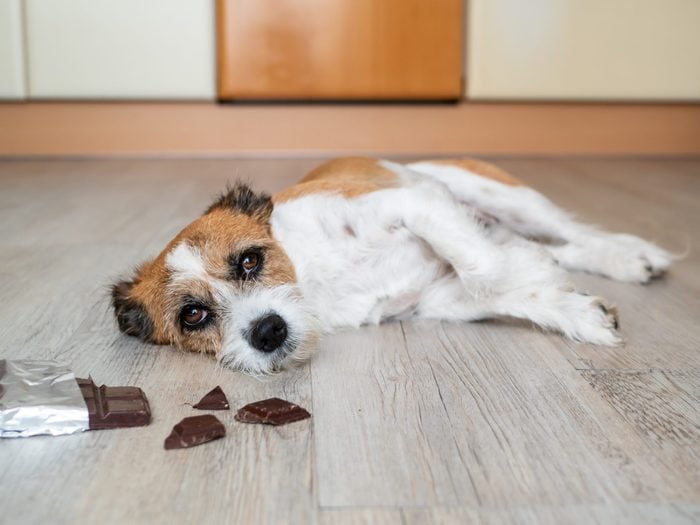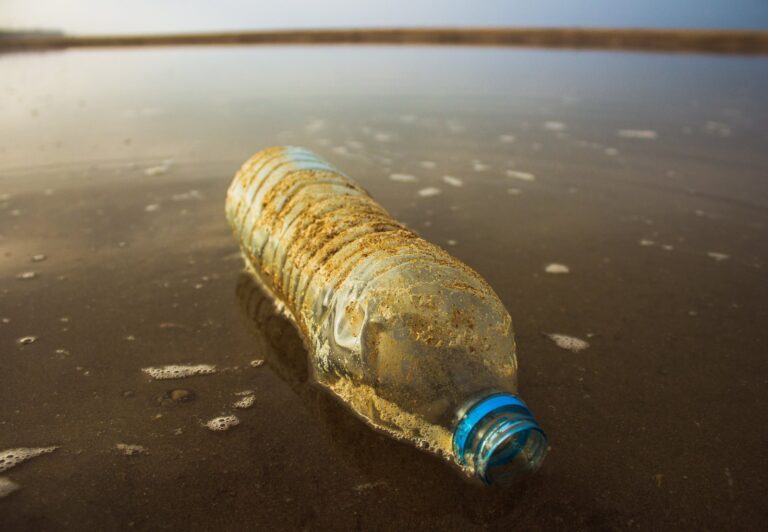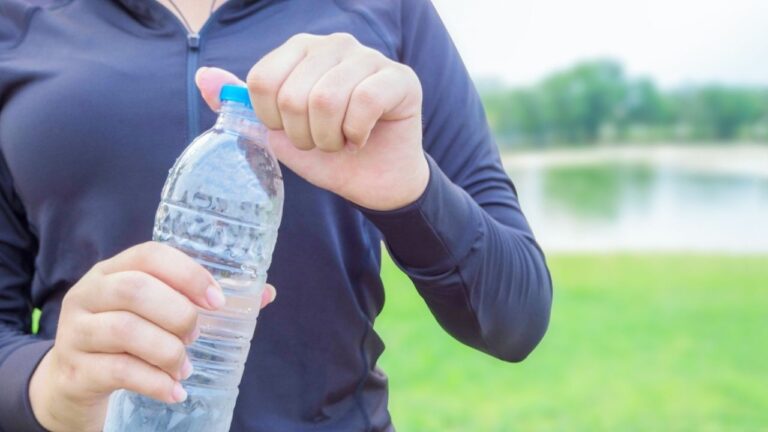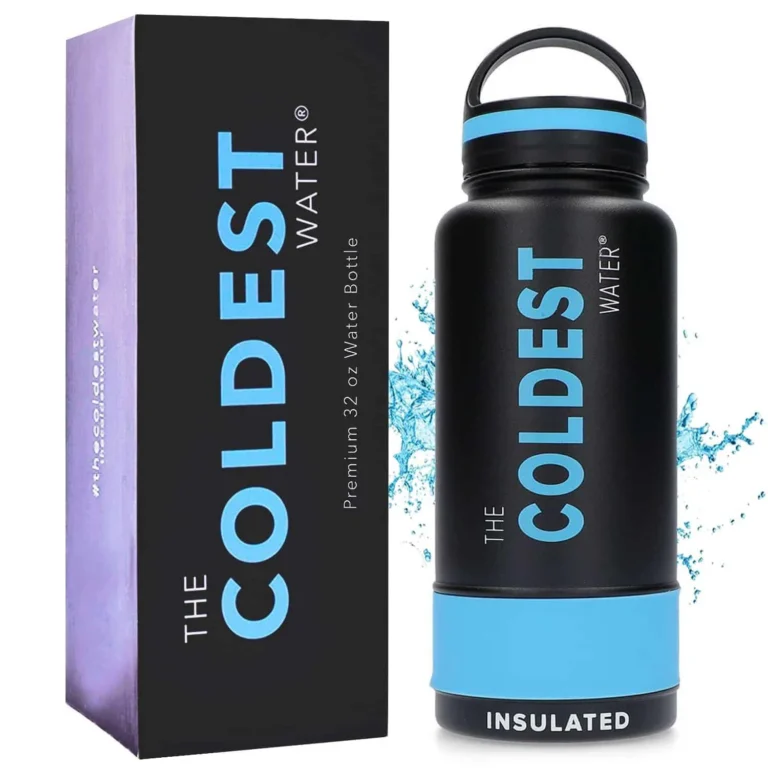Accidents happen, and sometimes our curious furry friends end up swallowing things they shouldn’t. If your dog has swallowed a bottle cap, it’s important to take prompt action to ensure their safety and wellbeing. In this blog post, we will provide you with essential steps to follow when your dog ingests a bottle cap, helping you navigate this potentially alarming situation with confidence and care. So, let’s dive in and learn how to handle a dog swallowing a bottle cap based on factual data and expert advice.
I. Understanding the potential dangers of a dog swallowing a bottle cap
Understanding the potential dangers of a dog swallowing a bottle cap
The act of a dog swallowing a bottle cap may seem harmless at first, but it can pose serious risks to their health. Bottle caps, especially those made of metal or hard plastic, can cause a range of problems when ingested by dogs. Some potential dangers include:
- Choking Hazard: Bottle caps can become lodged in a dog’s throat, blocking their airway and causing choking. This is particularly dangerous for small dogs or those with narrow air passages.
- Gastrointestinal Obstruction: If the bottle cap travels beyond the throat, it can get stuck in the dog’s stomach or intestinal tract. This can lead to a partial or complete blockage, preventing the passage of food, water, and waste.
- Perforation and Internal Injury: Sharp edges on the bottle cap can puncture the dog’s digestive system, causing internal bleeding, infection, or other serious complications.
- Toxicity: Some bottle caps, particularly those made of certain plastics or coated with chemicals, can be toxic when ingested. This can result in poisoning and require immediate medical attention.
It is important to take immediate action if you suspect that your dog has swallowed a bottle cap. Consulting a veterinarian is crucial to determine the appropriate course of action and minimize any potential harm to your furry friend.
II. Signs and symptoms
Recognizing the signs that a dog has swallowed a bottle cap
Recognizing the signs that a dog has swallowed a bottle cap
When a dog swallows a bottle cap, it is crucial to recognize the signs to ensure timely intervention. Some common signs that may indicate a dog has swallowed a bottle cap include:
- Choking or gagging: The dog may exhibit signs of distress, such as coughing, gagging, or choking sounds.
- Vomiting: Frequent or persistent vomiting may indicate that the bottle cap is causing irritation or obstruction in the digestive tract.
- Decreased appetite: A dog that has swallowed a foreign object may show a loss of appetite or refuse to eat.
- Abdominal pain: The dog may display discomfort or pain in the abdominal area, often characterized by whining or restlessness.
- Changes in behavior: The dog may exhibit signs of distress, including lethargy, pacing, or even aggression.
- Diarrhea or constipation: The presence of a foreign object like a bottle cap in the digestive system can lead to digestive issues, such as diarrhea or constipation.
If you notice any of these signs or suspect that your dog has swallowed a bottle cap, it is essential to contact a veterinarian immediately for guidance and proper treatment. Early recognition and intervention can help prevent potential complications and ensure the well-being of your furry friend.
Knowing when to seek veterinary help
Knowing when to seek veterinary help is crucial when a dog swallows a bottle cap. Even though it may seem like a small object, it can pose serious risks and complications for your pet. Prompt veterinary attention is necessary to ensure the well-being of your furry friend.
Here are some signs that indicate you should seek veterinary help:
- Difficulty breathing or choking: If your dog is gasping for air or appears to be choking, immediate medical attention is necessary.
- Persistent vomiting or gagging: If your dog is vomiting repeatedly or seems to be gagging, it could indicate that the bottle cap is lodged in the throat or digestive tract.
- Refusal to eat or drink: If your dog is experiencing pain or discomfort, they may refuse food or water.
- Abdominal pain or discomfort: If your dog is showing signs of abdominal pain, such as restlessness, whining, or a hunched posture, it could indicate a blockage caused by the bottle cap.
- Lethargy or depression: If your dog appears unusually tired, weak, or depressed, it could be a sign of a serious problem.
Remember, it’s always better to be safe than sorry when it comes to your dog’s health. If you observe any of these signs or suspect that your dog has swallowed a bottle cap, contact your veterinarian immediately for guidance and next steps. They will be able to assess the situation and provide appropriate care for your furry companion.
III. Assessing the situation
Determining the size and material of the bottle cap swallowed
Determining the size and material of the bottle cap that a dog has swallowed is crucial in assessing the potential risks and complications. Size plays a significant role in determining if the bottle cap can pass through the dog’s digestive system without causing any blockages or obstructions. Smaller bottle caps are more likely to pass through the dog’s system, while larger ones may get stuck.
The material of the bottle cap is also important to consider. Some materials, such as plastic or rubber, are generally more flexible and less likely to cause harm. However, metal bottle caps can be more problematic as they can be sharp and pose a cutting risk to the dog’s digestive tract.
Here are some steps to help determine the size and material of the swallowed bottle cap:
- Try to determine the size of the bottle cap by referring to the type of bottle it came from. Compare it to other bottle caps or use a measuring tape if available.
- If possible, inspect the material of the bottle cap. Is it plastic, metal, or another material? This information will be valuable to the veterinarian when assessing potential risks.
- Take note of any signs or symptoms your dog may be experiencing, such as vomiting, abdominal pain, or changes in appetite and behavior. These signs can help the veterinarian make a more accurate diagnosis.
Remember, it is always best to seek veterinary advice when your dog swallows a foreign object like a bottle cap. They will be able to guide you on the appropriate steps to take based on the size and material of the swallowed object.
Considering the potential risks and complications
When a dog swallows a bottle cap, there are potential risks and complications that need to be considered:
- Obstruction: Depending on the size of the bottle cap and the dog’s anatomy, the cap may become lodged in the dog’s throat, esophagus, stomach, or intestines, causing an obstruction. This can lead to discomfort, pain, and digestive issues.
- Perforation: The sharp edges of a bottle cap can cause tears or perforations in the dog’s digestive tract if it passes through it. This can lead to more severe complications such as internal bleeding, infection, and peritonitis (inflammation of the abdomen).
- Foreign Body Reaction: If the bottle cap remains in the dog’s digestive system for an extended period, it can trigger an inflammatory response known as a foreign body reaction. This can result in gastrointestinal distress, vomiting, and diarrhea.
- Ingestion of Toxins: Some bottle caps, especially those made of certain materials, may contain toxic substances like lead or other chemicals that can be harmful to the dog if ingested.
- Impact on Digestive Function: Swallowing a bottle cap can disrupt the normal functioning of the dog’s digestive system, leading to issues with digestion and nutrient absorption.
It is crucial to contact a veterinarian when a dog swallows a bottle cap to assess the situation, determine the potential risks, and provide appropriate treatment to minimize complications and ensure the dog’s well-being.
IV. Contacting a veterinarian
Calling a veterinarian for advice and next steps
If you suspect that your dog has swallowed a bottle cap, it is crucial to call a veterinarian for advice and next steps. While not all cases require immediate medical attention, it is essential to consult with a professional to determine the best course of action. A veterinarian will be able to assess the situation based on factors such as the size and material of the bottle cap swallowed, as well as the symptoms exhibited by your dog.
During the phone call with the veterinarian, they may provide guidance on whether to induce vomiting or seek immediate medical attention. Inducing vomiting may be recommended if the ingestion occurred recently, and the bottle cap is unlikely to have passed into the intestines. On the other hand, if there is a risk of complications or if the ingestion occurred some time ago, the veterinarian may advise bringing your dog in for an examination and potential treatment.
It is crucial to follow the veterinarian’s guidance closely. They may recommend monitoring your dog at home, providing a special diet, or scheduling further tests or procedures. By seeking prompt veterinary care and adhering to their instructions, you are ensuring the best possible outcome for your pet’s health and well-being.
Following their guidance on whether to induce vomiting or seek immediate medical attention
When a dog swallows a bottle cap, it is crucial to seek veterinary advice immediately. The veterinarian will assess the situation and provide guidance on the next steps to take. Depending on the size and material of the bottle cap swallowed, inducing vomiting or seeking immediate medical attention may be recommended.
Here are the possible scenarios and the corresponding actions:
- Induce vomiting: If the bottle cap is small and there is a possibility that the dog can safely bring it up, the veterinarian may recommend inducing vomiting. This should only be done under veterinary supervision to ensure the safety of the dog.
- Immediate medical attention: If the bottle cap is large, sharp, or made of materials that can cause internal damage, immediate medical attention may be necessary. In such cases, the veterinarian may recommend an X-ray or ultrasound to determine the exact location of the bottle cap and assess any potential risks or complications.
It is important not to attempt any home remedies without consulting a veterinarian first, as some methods can be harmful or ineffective. Always follow the guidance provided by the veterinarian, as they have the expertise to make the best decisions for your dog’s health and well-being. Remember, prompt veterinary care is crucial in these situations to minimize the risks and ensure the best possible outcome for your furry friend.
V. Treatment options
Exploring the possible treatment options for a dog that swallowed a bottle cap
When a dog swallows a bottle cap, it is important to explore the possible treatment options to ensure their well-being. The course of action will depend on various factors, such as the size and material of the bottle cap, as well as the dog’s condition.
One treatment option is surgical intervention, which involves the removal of the bottle cap through a surgical procedure. This method is generally recommended if the bottle cap is large or if it poses a blockage or obstruction in the dog’s digestive system. Surgical intervention may require a longer recovery time and carries the risks associated with any surgical procedure.
Another treatment option is endoscopic removal, which involves using an endoscope to retrieve the bottle cap from the dog’s stomach or intestines. This minimally invasive procedure is typically performed by a veterinarian with specialized training.
It is important to note that not all cases of bottle cap ingestion require immediate medical intervention. In some instances, the dog may be able to pass the bottle cap naturally without any complications. However, it is crucial to monitor the dog closely and seek veterinary guidance to ensure their safety.
Regardless of the treatment option chosen, prompt veterinary care is vital in cases of bottle cap ingestion. Delaying treatment can increase the risk of complications, such as gastrointestinal blockages or perforations. Always consult with a veterinarian for advice and follow their guidance on the best course of action for your dog’s specific situation.
Surgical intervention and endoscopic removal
Surgical intervention and endoscopic removal are two potential treatment options for a dog that has swallowed a bottle cap.
In cases where the bottle cap is causing an obstruction or pose a high risk of injury, surgical intervention may be necessary. During surgery, a veterinarian will make an incision in the dog’s abdomen and extract the bottle cap. This procedure is typically performed under general anesthesia, and the dog may require post-operative care and monitoring.
Another option is endoscopic removal, which involves using an endoscope to visualize and remove the bottle cap from the dog’s digestive system. Endoscopy is a minimally invasive procedure that allows the veterinarian to access the gastrointestinal tract through the mouth or rectum. This technique can be effective for retrieving small foreign objects such as bottle caps. However, not all veterinary clinics have access to endoscopic equipment, so availability may vary.
It is important to note that both surgical intervention and endoscopic removal should be performed by a qualified veterinarian. Dog owners should not attempt to remove a bottle cap themselves, as it can cause further harm or complications. It is always best to seek immediate veterinary attention when a dog has swallowed a foreign object like a bottle cap.
| Treatment Option | Procedure | ||
|---|---|---|---|
| Surgical Intervention | Involves making an incision in the dog’s abdomen and extracting the bottle cap | Endoscopic Removal | Uses an endoscope to visualize and retrieve the bottle cap from the digestive tract |
VI. Preventive measures and precautions
Learning how to prevent a dog from swallowing foreign objects
To prevent a dog from swallowing foreign objects, there are several steps you can take to ensure their safety:
- Provide appropriate toys: Give your dog sturdy, non-toxic toys that are too large to swallow. Avoid toys with small parts that can be easily chewed off.
- Supervision: Always supervise your dog during playtime, especially with new toys or objects. This allows you to intervene if they start to chew or swallow something they shouldn’t.
- Training: Teach your dog the “leave it” and “drop it” commands to help prevent them from picking up and swallowing foreign objects.
- Secure garbage bins: Keep your trash cans securely closed or in a dog-proof container to prevent curious dogs from rummaging through and ingesting harmful objects.
- Keep hazardous items out of reach: Store household chemicals, medications, and other potentially dangerous objects in cabinets or high shelves where your dog cannot access them.
- Regular veterinary check-ups: Schedule regular check-ups with your veterinarian. They can perform routine tests and provide advice on preventing common pet hazards.
By following these preventive measures, you can reduce the risk of your dog swallowing foreign objects and keep them safe and healthy. Remember, if you suspect that your dog has ingested something harmful, it’s essential to seek prompt veterinary care to avoid potential complications.
Providing appropriate toys and supervision
Providing appropriate toys and supervision is essential in preventing dogs from swallowing foreign objects such as bottle caps. By offering suitable toys and closely monitoring their playtime, pet owners can significantly reduce the risk of their dogs ingesting harmful items. Here are some tips to ensure the safety of your furry friend:
- Choose safe toys: Opt for toys that are specifically designed for dogs and are made from durable materials that won’t easily break or fragment. Avoid toys with small parts that can be easily chewed off and swallowed.
- Size matters: Select toys that are appropriate for the size of your dog. Large breed dogs may require stronger and more robust toys that they cannot choke on or swallow.
- Supervise playtime: Always supervise your dog while they are playing with toys, especially if they have a tendency to chew or ingest objects. Interact with them during playtime to redirect their attention away from potentially harmful items.
- Regularly inspect toys: Routinely inspect your dog’s toys for signs of wear and tear. If a toy becomes damaged or shows signs of breakage, replace it immediately to prevent your dog from swallowing any small parts.
- Rotate toys: Introduce new toys and rotate them regularly to keep your dog engaged and prevent them from becoming bored with their toys. This reduces the likelihood of curiosity-driven behaviors that could result in swallowing foreign objects.
By providing appropriate toys and closely supervising playtime, pet owners can minimize the risk of their dogs swallowing bottle caps or other hazardous items. However, it is important to remember that accidents can still happen, and seeking prompt veterinary care is crucial if a dog swallows a foreign object to prevent any potential complications.
VII. Summary of the steps to take when a dog swallows a bottle cap
When a dog swallows a bottle cap, it’s important to take prompt action to ensure their safety and well-being. Here are the key steps to follow:
- Stay calm and assess the situation: Take note of any symptoms your dog may be experiencing and observe their behavior.
- Contact your veterinarian: Call your vet immediately and inform them of the situation. They will provide guidance on the next steps.
- Follow your vet’s advice: Depending on the size, material, and potential risks, your vet may recommend inducing vomiting or seeking immediate medical attention.
- Consider the treatment options: In some cases, surgical intervention or endoscopic removal may be necessary to safely remove the bottle cap.
- Prevention: Take proactive measures to prevent your dog from swallowing foreign objects in the future. Provide appropriate toys and supervision during playtime.
- Summary:When a dog swallows a bottle cap, it’s important to prioritize their safety. Contact your veterinarian, follow their guidance, and seek proper treatment if necessary. Prompt veterinary care is key in ensuring the best outcome for your furry friend.
Emphasizing the importance of prompt veterinary care
Emphasizing the importance of prompt veterinary care is crucial when a dog swallows a bottle cap. While some cases may resolve on their own, it is essential to seek professional advice to ensure the well-being of your furry friend. Here are a few reasons why prompt veterinary care is essential:
- Assessment of the situation: A veterinarian can accurately assess the severity of the situation by considering factors such as the size and material of the bottle cap swallowed, the dog’s size, and any accompanying symptoms. This assessment will guide further treatment decisions.
- Risk of complications: Swallowing a foreign object like a bottle cap can lead to various complications, including obstruction, gastrointestinal perforation, and internal damage. A veterinarian can monitor for any potential complications and intervene if necessary.
- Inducing vomiting: Depending on the specifics of the case, a veterinarian may recommend inducing vomiting to try and expel the bottle cap. This should only be done under professional supervision to prevent any harm to the dog.
- Medical intervention: If the bottle cap does not pass through the digestive system, surgical intervention or endoscopic removal may be necessary. Prompt veterinary care ensures that these options are explored quickly if needed.
Remember, prevention is key to avoid such situations in the future. Providing appropriate toys and supervision, as well as keeping hazardous items out of reach, can greatly reduce the risk of your dog swallowing foreign objects.




